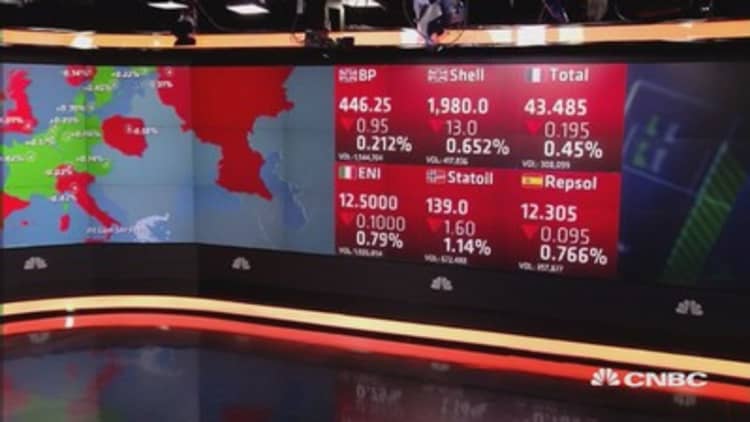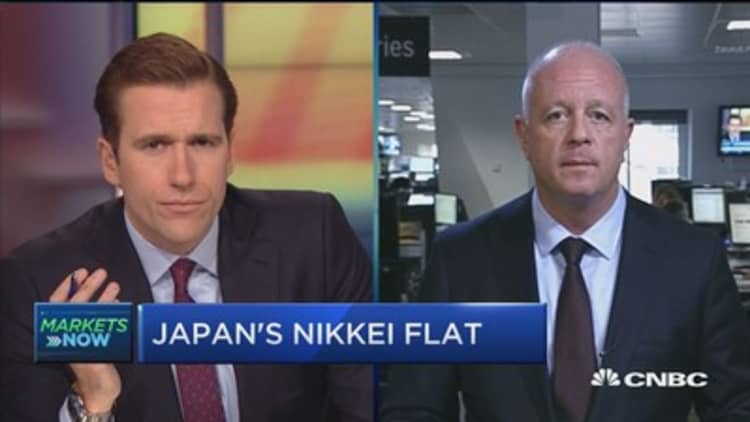
OPEC is expected to deal for real this time, striking some form of agreement when it meets at the end of the month to curb production and stabilize the oil market.
The cartel and non-OPEC members have been hashing out what could amount to an agreement to freeze production increases and actually cut back some output. The oil producers have tried and failed to strike a deal in the past, with the bottom line being that Saudi Arabia, the world's largest oil exporter, was not willing to cut or freeze output unless all producers would do the same.
"I think the odds are strongly in favor of the deal because Saudi wants the deal," said Helima Croft, RBC's global head of commodities strategy. "If they want a deal, there will be a deal. Saudi Arabia drives the bus."

The Organization of the Petroleum Exporting Countries agreed at a September meeting in Algiers that they would work on an agreement to cut production to between 32.5 and 33 million barrels a day. They left the details of how the cuts would be shared for the Nov. 30 meeting of OPEC oil ministers, and now analysts say there could be a mix of production freezes and cuts that make up the final deal.
"All of the OPEC producers, including non-OPEC Russia, have really pushed hard over the last three to four months to extract the last thimble full of oil that they possibly can in order to set themselves up in the best position to agree to a production freeze. Russia is at a maximum," said Chris Weafer, senior partner with Macro-Advisory. He said Russia's output was 11.55 million barrels a day in October, and it may give a nod to a freeze but not an actual cut.
Croft said OPEC's producers are more serious than in previous attempts, and they are all keen to increase revenues, after following a policy for the past two years of letting market forces drive prices. With that policy in place, producers ramped up production to record highs and sent the price of oil cratering, to a low of about $26 in February.
Even since agreeing to the framework of a deal, OPEC kept pumping, driving production up by 240,000 barrels a day to more than 33.6 million barrels a day in October. The biggest contributors to the increase were Iraq, Libya and Nigeria.
Croft noted that Saudi Arabia's energy minister has been promoting the deal, and she has said it's in the kingdom's interest to have oil trade above $50 per barrel because of its efforts to makeover its economy and plan to float stock in its state-owned oil company next year. It was Saudi Arabia's differences with Iran that foiled a deal last spring. "It's striking to me that Khalid Al-Falih twice in the last week came and talked about the importance of getting this done," said Croft.
Oil prices have been rising and falling on the prospects of the deal, and this week an agreement looked more promising. West Texas Intermediate crude futures closed at $45.69 per barrel Friday, up more than 5 percent for the week.
However, it is questionable how much impact an agreement would actually have on prices.
"These guys are working the newswires like crazy. The Russian minister is on the wires every day talking up the prospects for a deal," said John Kilduff of Again Capital. "I think the market is going to see right through this deal. It's not going to be good for them. They'll be scrambling again."
Weafer is less optimistic than other analysts about the shape of the deal, and he expects it to end up just being a freeze at high levels, rather than a cut that puts production more in line with demand.
"The big elephant in the room in these discussions is U.S. shale. It's perfectly well understood that if the price of oil goes higher than the mid $50s, then that will almost certainly bring more U.S. shale back onto the market and increase the supply problem ... and therefore leave the oil price vulnerable to a collapse back into the $40s rather than the high $50s or $60 in 2017," he said.
Analysts said the biggest cuts would have to come from Saudi Arabia, Kuwait and the United Arab Emirates. Nigeria and Libya are wild cards in that they would both like to return more crude to the market, but it's unclear how much they will be able to do that. Libya has said it sees output rising to 900,000 barrels a day. They are also among the countries seeking exemptions from the deal. Iraq and Iran have also sought exemptions.
Iraq's oil minister on Friday said he was now optimistic for a deal. Iraq had been holding out against a cut, as it has been ramping up its production. Jabbar al-Luaibi said he and OPEC had made progress resolving their differences, according to a Dow Jones report.
Reuters reported Friday that OPEC ministers, attending a conference in Doha, suggested that Iran cap output at 3.92 million barrels per day, a higher level than initially sought. Iran has said it would freeze at between 4 and 4.2 million barrels a day, and had not responded to the new offer. Reuters quoted Iran's OPEC governor as saying he was optimistic that a deal would be reached.
"It looks like they're moving toward some sort of deal, and I think that given how active Saudi Arabia is versus in previous attempts where they were less enthusiastic, and also given they would be the ones that would be cutting the most," said Anthony Yuen, global energy strategist at Citigroup. "The final contour of the deal is still being worked out, and it looks to be very fluid given how much they have to negotiate among parties."
Michael Cohen, head of Barclays energy commodities research, said he doesn't ultimately expect much from any deal. "The likely scenario is a face-saving measure that doesn't change the balance," he said.


